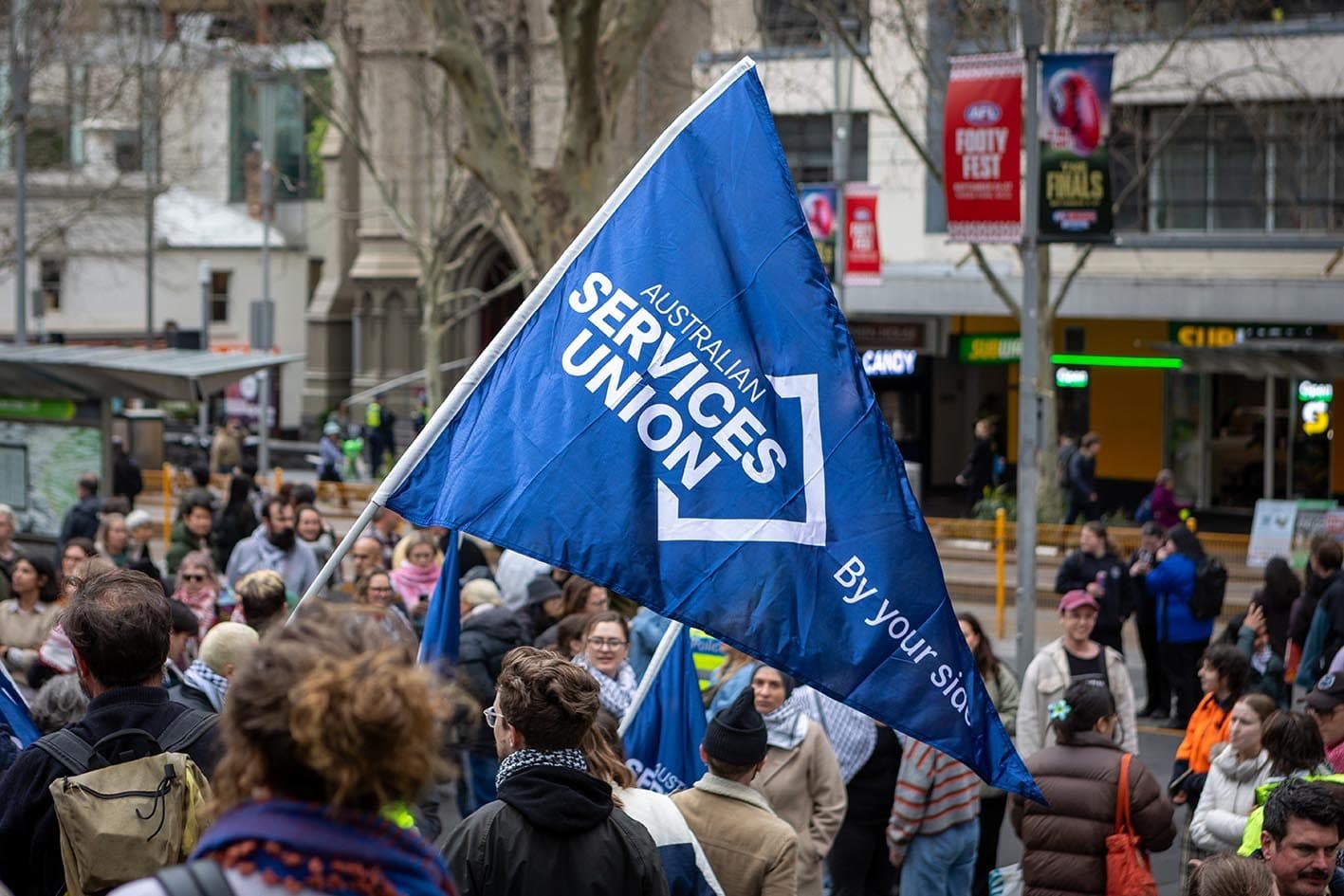Sharpening the knife? Fair Work takes another step towards community sector wage cuts

This week we’ve seen the clearest indication yet that the Fair Work Commission (FWC) intends to proceed with its plan to cut the pay thousands of community sector workers.
On 20 October, FWC President Adam Hatcher gave a flat rejection to a request from the Australian Services Union (ASU) to change course. “That’s not going to happen”, he declared in response to the ASU’s request, and an identical one from the Victorian government, at a directions hearing on 20 October. The union had asked the FWC to hit pause on their wage-cutting interim decision from April (detail here), and to scrap hearings scheduled for the following week to discuss the disastrous proposal.
The commission’s rejection of the union’s argument for a complete change of course means the FWC will proceed with hearings next week. These hearings are designed to finalise some version of the FWC’s wage-cutting interim decision from April, rather than scrap it altogether.
And the news gets worse.
As well as advocating for a complete rejection of the commission’s proposed wage-cutting plan, the ASU has filed a document outlining what the union believes is the best possible outcome within the strictures of the commission’s wage-cutting interim decision.
The analysis of this “best case” scenario, done by UNSW Associate Professor Natasha Cortis, is included as an appendix to the union’s “submission in reply” to Fair Work, dated 15 October. It’s shocking. The analysis shows that between 10 and 20 percent of all job roles in the sector will still get a wage cut, even under this best-case scenario, if the FWC proceeds with its plan.
Breaking this figure down by current employment level, 10 percent of all level four roles are certain to get a pay cut, with most of these positions losing between $80 per week and $350 per week. Another 9 percent of level four roles face a potential pay cut of up to $100 per week, depending on their current pay point within level four. Eighteen percent of current level five staff face a certain pay cut, mainly in the range of $80 to $300 per week.
Three percent of disability support worker roles would definitely face a pay cut (with another 18 percent facing a potential pay cut, depending on their current pay point within their classification level). Nine percent of other practitioner roles face a definite pay cut, along with 20 percent of policy, research and project workers, and an outrageous 44 percent of office and facility support staff positions.
And remember this is the very best-case scenario, which assumes that Fair Work decides to accept all of the ASU’s proposed modifications to the commissioners’ disastrous wage-cutting interim decision. There is no guarantee that they will.
Indeed, FWC President Hatcher’s off-hand dismissal of the union case to abandon the FWC’s wage-cutting interim decision indicate that the commissioners, each on more than $10,000 per week, are intent on pursuing their course regardless of the outcome for many thousands of workers.
The threat of wage cuts to tens of thousands of mainly women workers is very real indeed. This attack shines a light on the nature of the “Fair” Work Commission. The FWC is beholden to the profit-driven interests which dominate the national economy. This is why workers have never won gains through just stating a case at the commission and hoping for the best. The eight-hour day, annual leave, higher pay and health and safety have all been won, first and foremost, by workers organising, rallying—and most importantly, by going on strike.
This means the ASU’s campaign against the commission’s wage-cutting can’t just consist of a single one-off rally—welcome though the ASU’s National Day of Action on 23 October is. A serious response needs, at a minimum, a string of mass meetings and delegates meetings to explain the attacks in some depth. This can equip members and delegates to better recruit their fellow workers to the campaign, and to the union. There’s a need for repeated mass mobilisations (like the ASU campaign which won the Equal Remuneration Order in the community sector in 2012), as well as a serious discussion about strike action.
Both now and in the longer term, there’s an urgent need for workers to take a more combative approach, and to push back against the dominant, pro-Labor politics that have dominated this country’s union movement for far too long. One positive in this regard is the early efforts of ASU Socialists, a part of Victorian Socialists’ Socialist Workers Caucus. ASU Socialists’ Instagram page is full of informative takes on crucial questions like “what the hell is going on with Fair Work?” and “Why Social and Community Sector cuts are normal under capitalism”, as well as explainers of the issue, promo for in-person get-togethers and the union’s day of action, and posts about the inspirational general strike for Gaza in Italy.
The FWC isn’t stopping its attacks—so it’s up to workers in the community sector, and beyond, to step up the resistance.